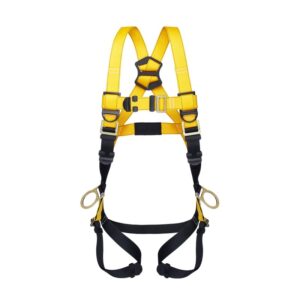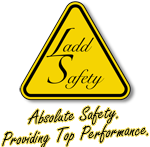Olive Branch Fall Protection Equipment

In today’s fast-paced work environment, ensuring the safety of employees is paramount. One crucial aspect of workplace safety is fall protection equipment, which plays a vital role in preventing serious injuries and accidents. Olive Branch Fall Protection Equipment offers a comprehensive range of high-quality products designed to provide maximum protection in hazardous situations.
Understanding the Importance of Fall Protection Equipment
Falls from heights continue to be a leading cause of workplace injuries and fatalities. By utilizing fall protection equipment, employers can significantly reduce the risk of such incidents, creating a safe and secure work environment. Fall protection equipment acts as a safety net, preventing workers from falling and minimizing the potential impact if a fall occurs.
The Role of Fall Protection in Workplace Safety
Fall protection equipment acts as a crucial line of defense in workplace safety protocols. By implementing fall protection measures, employers demonstrate their commitment to employee well-being and comply with occupational health and safety regulations. By providing the right equipment and training, employers can actively reduce the risk of falls and protect their workforce from life-threatening accidents.
Key Components of Fall Protection Equipment
Fall protection equipment is designed to work seamlessly together to provide comprehensive safety. The three main components of fall protection systems are:
- Harnesses: Harnesses are essential for ensuring worker safety by distributing fall forces across the body. They come in various styles and sizes, catering to different work environments and specific needs.
- Lanyards: Lanyards are connecting devices that secure the worker to the anchor point. They allow for movement while still preventing falls.
- Lifelines and Anchors: Lifelines, along with anchors, provide stability and secure attachment points for workers. They play a crucial role in minimizing the distance and potential impact of a fall.
Let’s delve deeper into the importance of each component:
Harnesses: Harnesses are not a one-size-fits-all solution. They are designed with different work environments and specific needs in mind. For example, in construction sites, full-body harnesses with additional padding and support may be used to ensure maximum comfort and safety for workers who spend long hours at elevated heights. On the other hand, industries such as oil and gas may require flame-resistant harnesses to protect workers from potential fire hazards. By providing the right harnesses, employers can address the unique challenges of their work environments and ensure the well-being of their employees.
Lanyards: Lanyards are an integral part of fall protection equipment, as they connect the worker to the anchor point. They come in various lengths and materials, depending on the specific requirements of the job. For instance, shock-absorbing lanyards are designed to reduce the impact on the body in the event of a fall. Some lanyards also feature self-retracting lifelines, which automatically adjust the length based on the worker’s movements, providing flexibility while maintaining safety. By selecting the appropriate lanyards, employers can enhance the effectiveness of their fall protection systems and ensure optimal worker safety.
Lifelines and Anchors: Lifelines and anchors are crucial components that provide stability and secure attachment points for workers. Lifelines can be either vertical or horizontal, depending on the nature of the work. Vertical lifelines are commonly used in activities such as tower climbing, while horizontal lifelines are suitable for tasks that require lateral movement, such as roof work. Anchors, on the other hand, serve as the secure connection point for lifelines and lanyards. They must be properly installed and capable of supporting the maximum potential load. By investing in high-quality lifelines and anchors, employers can ensure the reliability and effectiveness of their fall protection systems, minimizing the risk of falls and accidents.
By understanding the importance of each component and their role in fall protection, employers can make informed decisions when selecting and implementing the right equipment for their workforce. Prioritizing worker safety through comprehensive fall protection measures not only prevents accidents but also fosters a culture of care and well-being within the organization.
Features of Olive Branch Fall Protection Equipment
When it comes to fall protection equipment, Olive Branch stands out from the rest. With a commitment to quality and innovation, our products are designed to exceed industry standards, ensuring maximum safety for workers in any environment. Let’s explore some of the key features:
Harnesses and Lanyards: The Basics
Olive Branch harnesses are meticulously crafted with comfort and durability in mind. They provide a secure fit without compromising freedom of movement. Our lanyards come in various lengths and configurations, ensuring optimal connection and flexibility for workers.
Lifelines and Anchors: Ensuring Stability
Stability is crucial in fall protection, which is why Olive Branch lifelines and anchors are engineered to provide reliable and secure attachment points. Our lifelines are made from high-strength materials to withstand extreme conditions, while our anchors are designed for easy installation and versatility.
Fall Arrest Systems: Maximizing Safety
Olive Branch Fall Arrest Systems offer an extra level of protection for workers operating at heights. Designed to minimize the risk of injury during a fall, these systems employ innovative technologies for rapid deployment and gentle deceleration, ensuring worker safety and peace of mind.
Selecting the Right Fall Protection Equipment
Choosing the appropriate fall protection equipment can be challenging, considering the diverse range of job sites and hazards. Here are some key factors to consider when selecting fall protection equipment:
Assessing Your Workplace Needs
Start by evaluating your work environment and identifying potential fall hazards. Consider the nature of work, height requirements, and the specific tasks employees will be performing. This assessment will help determine the most suitable fall protection equipment for your workplace.
Understanding Equipment Ratings and Standards
Awareness of industry standards and equipment ratings is vital to ensure compliance and optimal performance. Look for equipment that meets recognized safety standards and undergoes regular inspections and testing. This ensures reliability and gives confidence in the quality of the equipment.
Considerations for Comfort and Ease of Use
Employee comfort and ease of use are critical factors to encourage consistent use of fall protection equipment. Select equipment with adjustable features to fit different body sizes comfortably. Additionally, opt for equipment that is ergonomic and user-friendly, allowing workers to focus on their tasks rather than struggling with equipment limitations.
Maintenance and Inspection of Fall Protection Equipment
Your investment in fall protection equipment doesn’t end with its purchase. Regular maintenance and inspections are crucial to ensure optimal performance and worker safety. Consider the following guidelines:
Regular Inspection for Optimal Performance
Schedule routine inspections by qualified personnel to check for wear and tear, damaged parts, and proper functioning of all components. Any equipment showing signs of wear or damage should be immediately taken out of service and replaced.
Proper Cleaning and Storage Practices
Clean fall protection equipment regularly to remove dirt, debris, and contaminants that may compromise its performance. Follow the manufacturer’s instructions for cleaning methods and solutions. Proper storage in a dry, clean, and well-ventilated area is essential to prevent damage and extend the lifespan of the equipment.
When to Replace Your Fall Protection Equipment
Over time, fall protection equipment may become less effective due to wear, exposure to harsh conditions, or changes in industry standards. Regularly assess your equipment to determine if it still meets safety requirements. When in doubt, consult with the manufacturer or a safety professional to ensure worker safety.
By understanding the importance of fall protection equipment, selecting the right equipment, and maintaining it properly, employers can create a safe working environment and protect their most valuable asset—their employees. Olive Branch Fall Protection Equipment offers a comprehensive range of products and solutions to meet the diverse needs of any industry, ensuring worker safety and peace of mind.
At Ladd Safety, we understand the critical importance of protecting your workforce with the highest quality fall protection equipment. As a local business deeply rooted in the Mid-South, we are dedicated to serving our community by providing customized safety solutions that meet the unique needs of the manufacturing industry. With Jessica Ladd’s expertise and commitment to employee safety, you can trust us to offer a full selection of trusted brands and products. From janitorial and breakroom supplies to first-aid essentials, we have everything you need to ensure a safe and well-equipped work environment. Don’t compromise on safety—Shop Now! and give your employees the protection they deserve.


